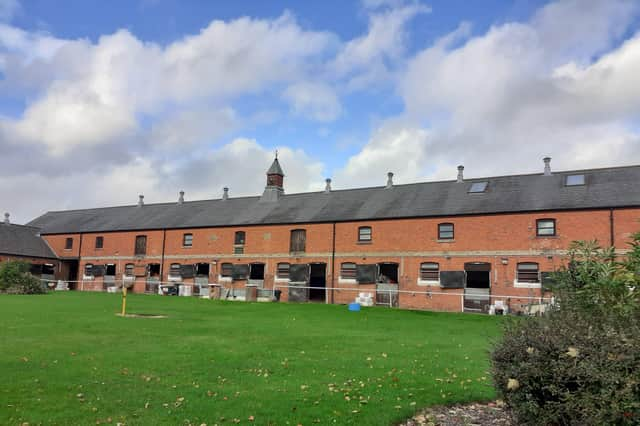Historic Melton military stables honoured with coveted green plaque


The structure still stands at the Defence Animal Training Regiment (DATR) headquarters off Asfordby Road having been used to train horses for the army since the early 1900s.
The stables were one of six nominees to be chosen for the Leicestershire County Council plaque following a popular ballot for 12 contenders with 3,700 votes beiong cast.
Advertisement
Advertisement
Others to be honoured in the latest round of plaque awards were the first woman to qualify as a pharmacist, the founder of the Quaker Movement and a soldier posthumously awarded the Victoria Cross.
Councillor Dan Harrison, chair at County Hall, said: “I’m delighted to see that members of the public have again cast their votes to pay tribute to people and places who have made a mark on the history of their communities.
“The response has once again been fantastic, with more than 3,700 votes cast – and there were so many worthy winners to choose from, all of whom have made a great and lasting contribution to their communities and the wider world.
“I would like to thank everyone who nominated a person or place, and all those people who voted to decide where the latest round of Green Plaques should be awarded.”
Advertisement
Advertisement
The DATR has been training and caring for animals used in military defence since 1905 - it was originally responsible for the purchase and training of horses for the British Army between 1887 and 1942 and now trains mainly dogs for the Ministry of Defence.
It is also the home of the Royal Army Veterinary Corps and has cared for some famous animals in the past, including the Household Cavalry horse Sefton, who was injured in the IRA Hyde Park bombings of 1982.
Others to receicvve green plaque recognition are Lt Col Philip Eric Bent VC DSO, who attended school in Ashby-de-la-Zouch, and who was killed at the Battle of Passchendaele in the First World War while leading a charge. He was awarded the Victoria Cross posthumously for ‘conspicuous bravery’.
Another was Sgt Herbert Ernest Black RAFVR, a Second World War fighter pilot from Measham who made several daring flights during the conflict.
Advertisement
Advertisement
His plane was hit in a dogfight during the Battle of Britain in 1940. Sgt Black managed to escape from his burning plane, but was badly hurt and later died of his injuries.
Frances Elizabeth Deacon, from Fleckney, got a green plaque because she was the first woman to pass the qualifying exam to become a pharmacist.
When she died at the age of 92 she was the oldest registered chemist in England;
George Fox, from Fenny Drayton, founded the Quaker Movement. His ideas influenced the US Constitution and the Bill of Rights in the USA and the ideas of Liberty, Equality and Fraternity used in the French Revolution. The Quakers were also among the first to oppose slavery;
Advertisement
Advertisement
The final recipient was Theodora Salusbury, an arts and crafts stained glass artist who designed stained glass windows in nearly 30 churches across England and Wales, including Narborough, Newtown Linford, Queniborough, Kimcote, Woodhouse Eaves and Birstall. Most of her work bears her signature, a peacock.